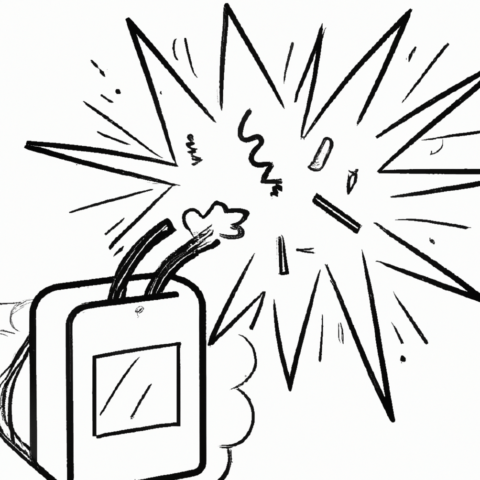In this guide:
This article is all about the topic of flashbacks in welding, and how to prevent them from happening. We’ll start by explaining exactly what a flashback is, and some of the reasons why they can occur. Next, we’ll talk about something called a flashback arrestor, which is a device that helps prevent explosions during welding. We’ll also explain the different types of arrestors and why it’s important to use high-quality equipment.
We’ll also clarify the difference between flashbacks and blowbacks, which are similar but with a subtle difference. We want to make sure you understand how to keep yourself and your equipment safe while welding, so we’ll go over some tips and precautions you can take. And lastly, we’ll share some information on how to make sure you’re using the right equipment and following the right procedures to avoid flashbacks. Remember safety first!
What is Flashback?
When working with oxy-acetylene equipment, it’s important to keep in mind that flashbacks can happen. A flashback is when the flame unexpectedly travels back into the torch’s gas supply tank, which can lead to an explosion. However, there are steps you can take to prevent this from happening. By regularly inspecting and maintaining your equipment, training operators on proper safety procedures, and monitoring cylinder pressures, you can reduce the risk of a flashback. If one does occur, it’s important to quickly shut off the torch and address any issues that may have caused it.
It’s also important to comply with the regulations put in place by the Acetylene Safety (England and Wales and Scotland) Regulations 2014, including the mandatory use of suitable flashback arrestors. This helps ensure the safety of those using the equipment, as well as those around them.
What is a Flashback Arrestor?
A flashback arrestor is a helpful device that helps prevent explosions while welding. It stops the flow of gas by using either chemical reactions or mechanical valves.
There are two types: wet arrestors that use chemicals to extinguish the flame, and dry arrestors that use valves to cut off the gas flow. Some also have hollow cylindrical filters that can quickly put out flames by disrupting the flame front. Additionally, flashback arrestors have other safety features like flame arresters, non-return valves, and thermal cut-off valves to prevent reverse gas flow and further ignition.
They are often used on torch inlets, hoses, and regulators in fuel gas piping systems, and are usually installed at the point where the gas line enters the welding machine. It is important to purchase flashback arrestors from well-known manufacturers to make sure they are of the best quality and effectiveness. This will help keep you safe while welding.
What’s the Difference Between a Flashback and a Blowback?
Sometimes while welding, the flame may accidentally travel back into the supply line and reach the fuel source, risking an explosion. This is known as a flashback and can be caused by a variety of factors such as too much oxygen in the gas or contaminants. It’s important to keep the gas supply clean and use the correct amount of oxygen to prevent this from happening.
Another occurrence during welding is known as a blowback. This happens when the flame goes back into the torch itself, rather than the supply line, and can be caused by issues with the torch tip or other mechanical issues such as a clogged tip or worn out orifier. Blowbacks are less severe than flashbacks as the flame is contained within the torch and doesn’t reach the fuel source, but it’s still important to address any mechanical issues that may cause a blowback to ensure the safety of the welding process.
To avoid flashbacks and blowbacks, it’s important to use proper equipment, follow proper procedures, and take necessary precautions. If either of these happen, it’s crucial to turn off the torch immediately and investigate the cause of the problem. Safety should always be a top priority and proper precautions and maintenance should be in place to prevent accidents.
Preventing Flashbacks
When using oxy/acetylene equipment, it’s important to use regulators, flashback arrestors, hoses, and blowpipes that are specifically designed for acetylene and oxygen and meet the BS EN ISO Standards.
Before starting, make sure to check the cylinder for safety, cleanliness, and any damage. After use, double check for damage and turn off all valves.
To ensure a safe experience, make sure that everyone is properly trained in the use of this equipment and follow the correct lighting-up procedures, ventilation, spark ignitor, and gas pressures and nozzle sizes for the job.
Handle acetylene cylinders with care and make sure to fit flashback arresters onto the pressure regulators on both the acetylene cylinder and the oxygen cylinder. Additionally, make sure nozzles are in good condition to prevent turbulent gas flow, and inspect and replace any damaged nozzles.
If a flashback does occur, close both the blowpipe/nozzle valves, close both cylinder valves, evacuate the area, and call the fire and rescue services. Before using the equipment again, make sure all equipment is working effectively, especially anything that might have been affected by heat, and don’t hesitate to reach out to your supplier if in doubt.
Summary
A flashback occurs when the flame in welding travels back into the torch’s gas supply tank and can be caused by worn equipment, operator error or lack of monitoring cylinder pressures. To prevent flashbacks, regular inspection, maintenance and safety training of operators is important. Using a flashback arrestor and purchasing from reputable manufacturers can also help.
Blowbacks, which occur when the flame travels back into the torch itself due to a mechanical issue, are less severe but should also be addressed for safety.
Overall, proper equipment and procedures are key to preventing both flashbacks and blowbacks.




